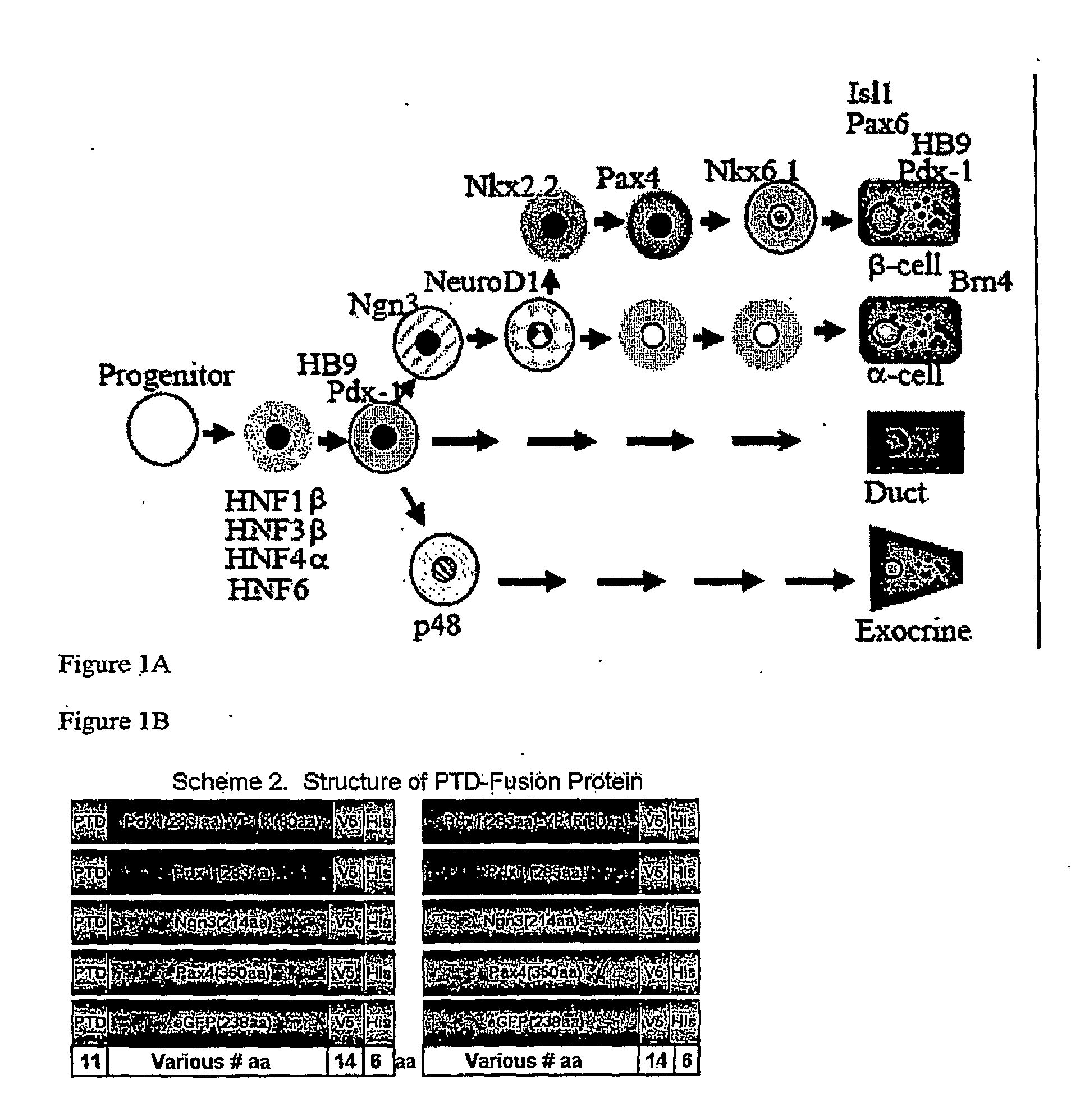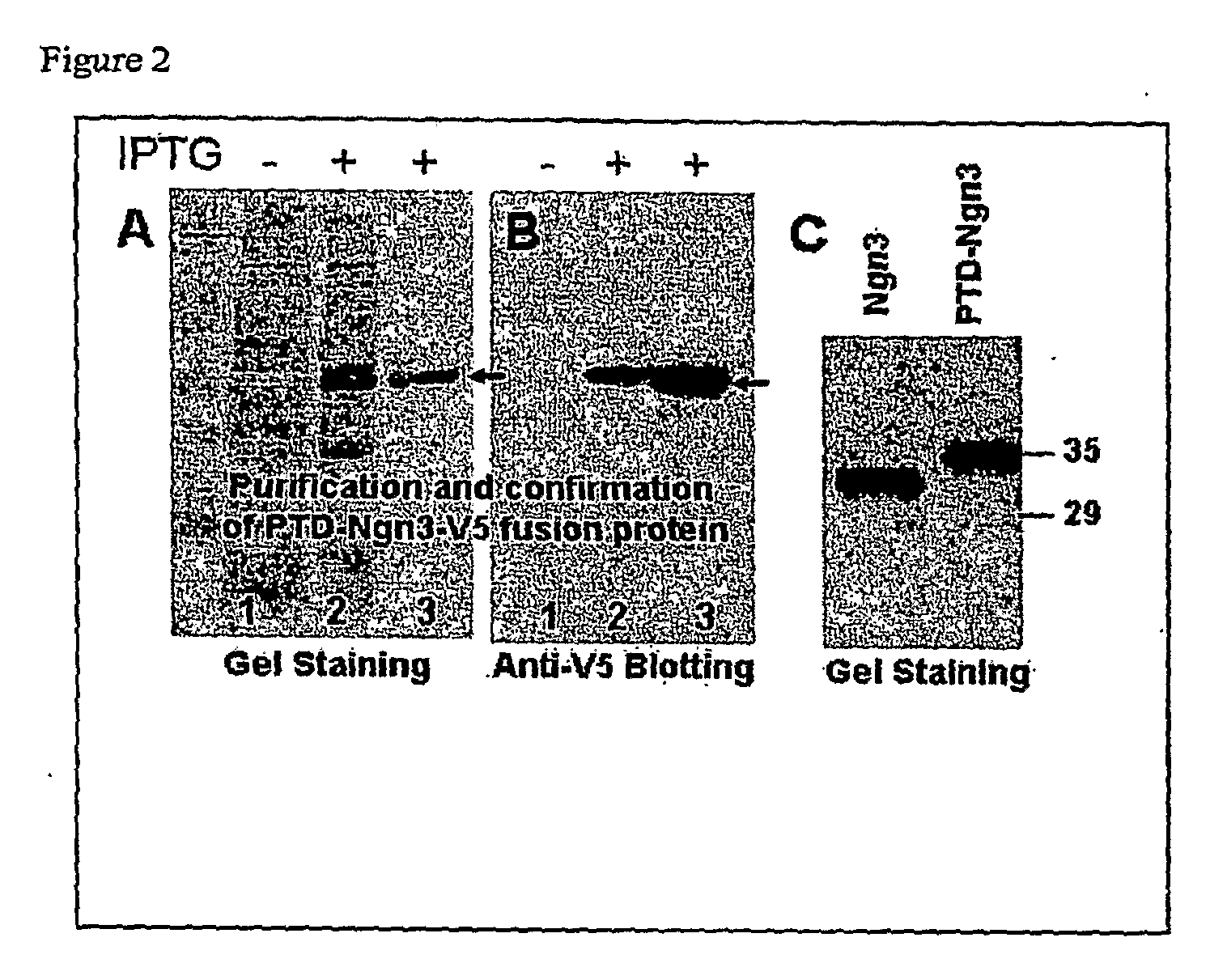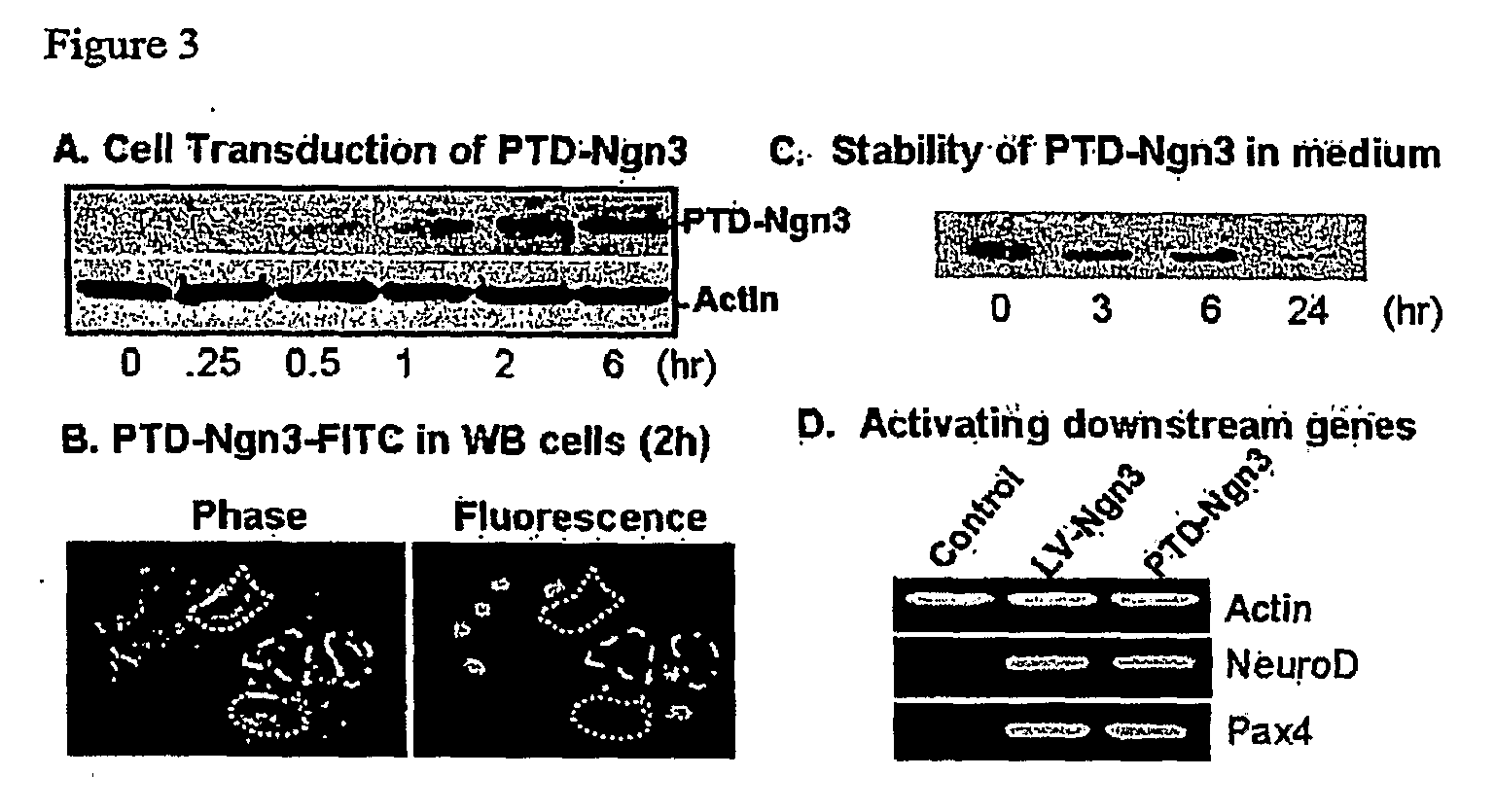Compositions for reprogramming a cell and uses therefor
a cell and cell technology, applied in the field of cell and cell reprogramming compositions, can solve the problems of reducing affecting the transplantation of islets, and provoking controversy over the use of genetic manipulation in human clinical therapy, so as to reduce the probability of developing a disorder
- Summary
- Abstract
- Description
- Claims
- Application Information
AI Technical Summary
Benefits of technology
Problems solved by technology
Method used
Image
Examples
example 1
Protein Transduction Domain-Containing-Ngn3 Fusion Protein (PTD-Ngn3)
[0172]A schematic showing the structure of exemplary protein transduction domain (PTD) containing fusion proteins is provided at FIG. 1B. While the orientation of the various domains is shown in one particular configuration, this is merely provided as one example. Other combinations and configurations are within the scope of the invention. In particular, the PTD domain may be positioned at the carboxy or amino terminal or at any other position within the polypeptide.
[0173]A PTD-Ngn3-V5-His-tag or Ngn3-V5-His-tag fusion protein was generated using pCR T7 / CT-TOPO expression plasmid (Invitrogen). Because the anti-His-tag antibody also recognizes many histidine-rich proteins, the pCR T7 / CT-TOPO plasmid also codes for V5 epitope, offering the advantage of selective detection of recombinant proteins using high quality, commercially available anti-V5 antibody. In brief, the cDNA encoding the entire reading frame of mouse ...
example 2
Production and Purification of PTD-Ngn3-V5-His Fusion Protein
[0175]To produce the desired fusion proteins, Escherichia coli BL21(DE3) cells transformed with plasmids pCR-PTD-Ngn3-V5-His or pCR-Ngn3-V5-His were grown at a 37° C. in LB medium containing ampicillin (100 μg / ml) to an OD600 0.5 (in mid-log phase). Expression of the fusion proteins was induced by adding 0.5 mM isopropylthiogalactoside (IPTG) for 4 hours. The induced cells were harvested and lysed by sonication in Lysis buffer (Invitrogen). Soluble PTD-Ngn3 or Ngn3 fusion proteins were purified using a Ni-NTA agarose column (Invitrogen), followed by desalting with a PD10 column (Amersham) according to the manufacturer's instructions. The purified proteins were visualized by Coomassie blue staining (FIGS. 2A and 2C) and confirmed by Western blot analysis with anti-V5 antibody (FIG. 2B). The proteins were aliquoted in PBS with 10% glycerol and stored at −80° C. until use. Purified PTD-Ngn3 and Ngn3 fusion proteins (FIG. 2C) ...
example 3
Functional Characterization of PTD Domain-Containing Ngn3 Fusion Protein
[0176]To evaluate ability of the PTD fusion protein to penetrate cells, a time-course of PTD-Ngn3 transduction was performed. WB cells, which are a rat hepatic epithelial stem-like clonal cell line (Tsao et al., Exp. Cell Res., 154, 38-52, 1984), were incubated with medium containing purified PTD-Ngn3 fusion protein (0.2 μM) for various periods, washed three times with PBS, and harvested in 2× SDS sample buffer. The PTD-Ngn3-V5 fusion protein was detected by Western blot with anti-V5 antibody (FIG. 3A). The results of this analysis demonstrated that protein transduction mediated by the PTD domain peaked at two hours. To visualize this process, purified PTD-Ngn3 fusion protein was labeled with FITC according to the manufacturer's instruction (Pierce). PTD-Ngn3-V5-*FITC was added to WB cells at a final concentration of 0.2 μM for 2 hours. The Ngn3 fusion protein lacking the PTD failed to enter cells. FIG. 3B shows...
PUM
| Property | Measurement | Unit |
|---|---|---|
| temperatures | aaaaa | aaaaa |
| temperatures | aaaaa | aaaaa |
| temperatures | aaaaa | aaaaa |
Abstract
Description
Claims
Application Information
 Login to View More
Login to View More - R&D
- Intellectual Property
- Life Sciences
- Materials
- Tech Scout
- Unparalleled Data Quality
- Higher Quality Content
- 60% Fewer Hallucinations
Browse by: Latest US Patents, China's latest patents, Technical Efficacy Thesaurus, Application Domain, Technology Topic, Popular Technical Reports.
© 2025 PatSnap. All rights reserved.Legal|Privacy policy|Modern Slavery Act Transparency Statement|Sitemap|About US| Contact US: help@patsnap.com



